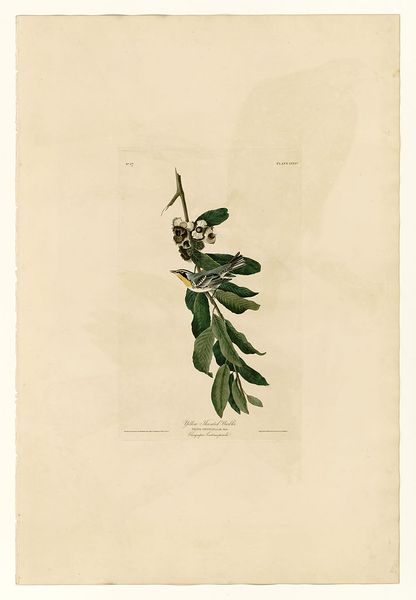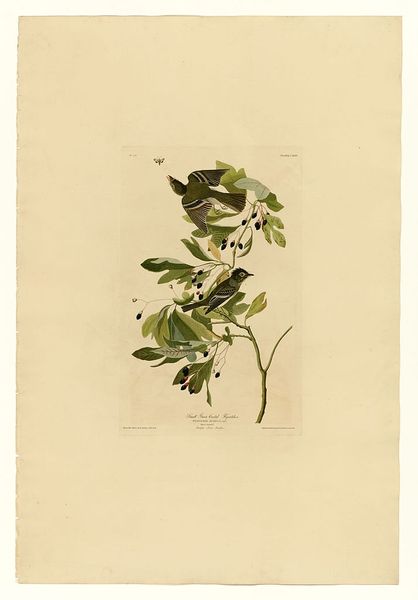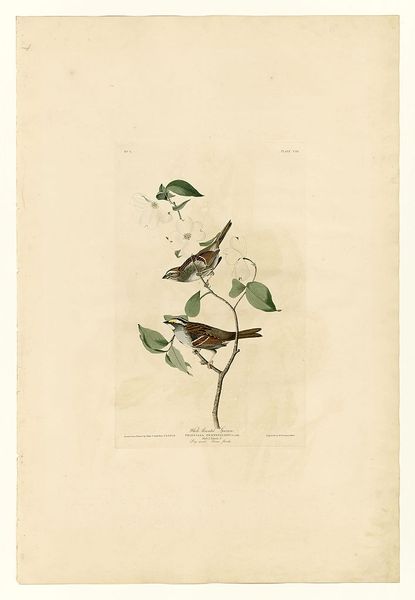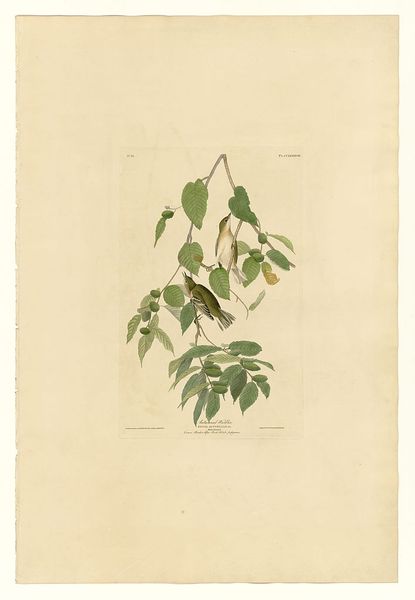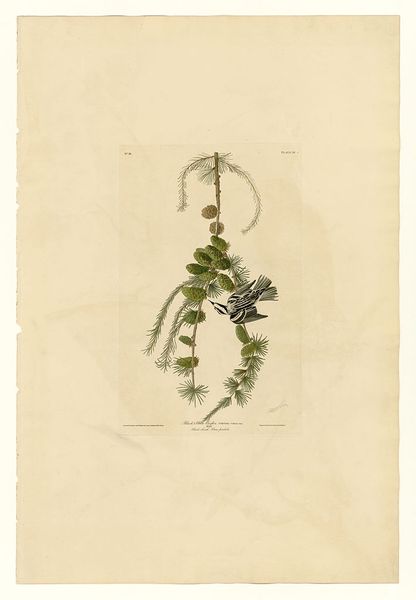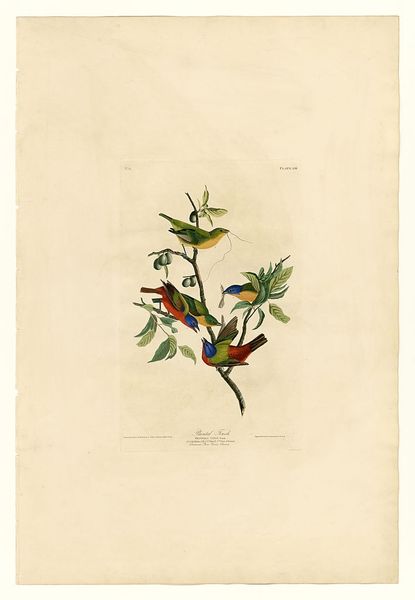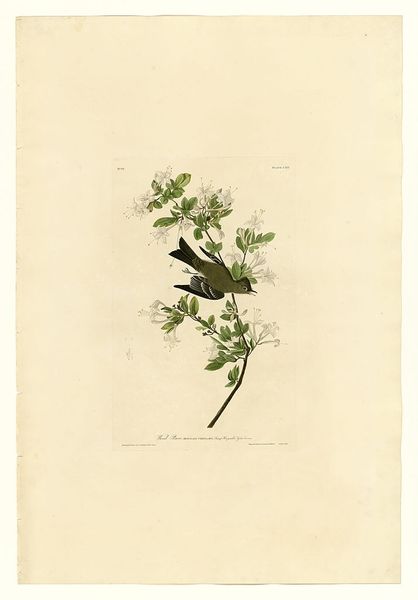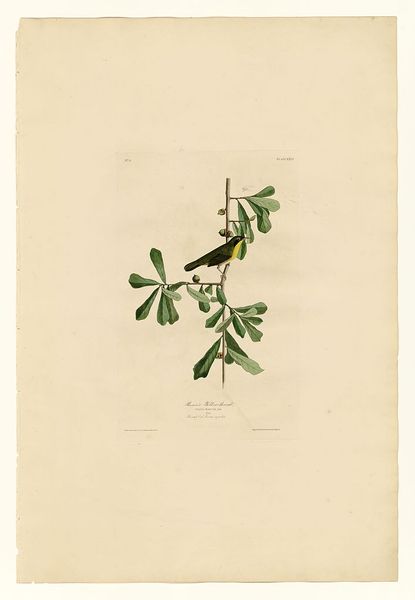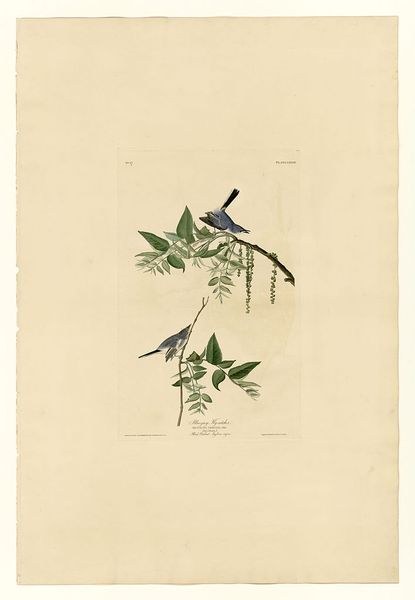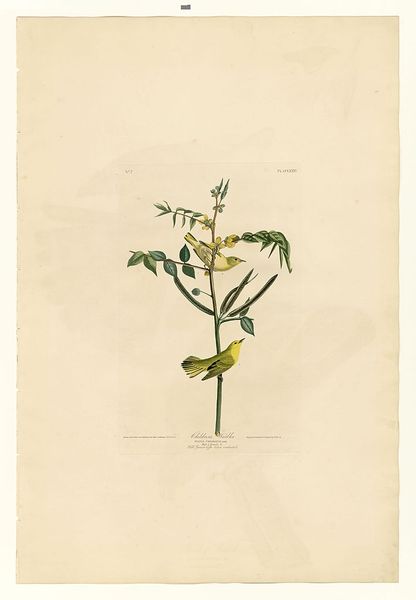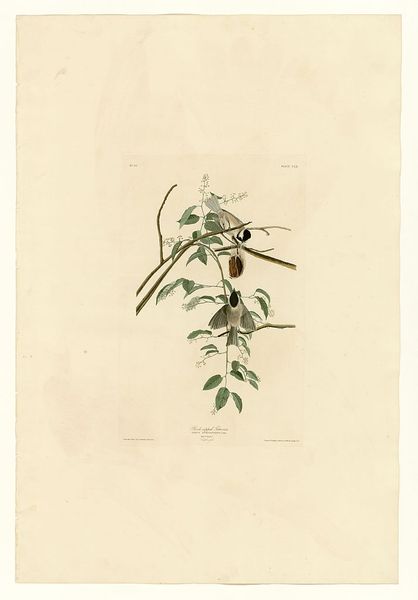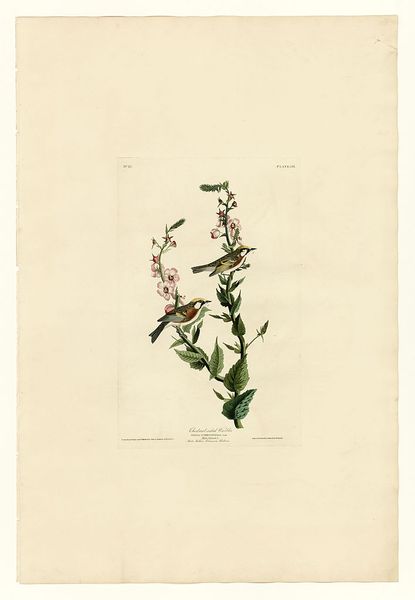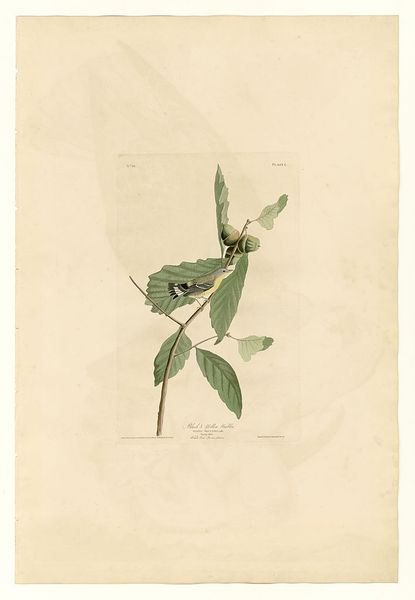
drawing, plein-air, watercolor
#
portrait
#
drawing
#
plein-air
#
botanical illustration
#
watercolor
#
romanticism
#
botanical drawing
#
watercolour illustration
#
naturalism
#
botanical art
#
watercolor
#
realism
Copyright: Public domain
Editor: Here we have "Plate 60. Carbonated Warbler," a drawing by John James Audubon. It showcases two warblers perched on a berry-laden branch, rendered in watercolor. There’s a delicate balance between the detailed depiction of the birds and the surrounding foliage that I find compelling. How do you interpret this work, especially considering its place in art history? Curator: It’s crucial to recognize that Audubon's work exists within a complex history. On one hand, he aimed to document American birdlife, contributing significantly to ornithology. On the other hand, his work reflects a specific 19th-century worldview marked by colonial expansion and exploitation of natural resources. How does his representation of these birds, seemingly harmonious within their environment, speak to or perhaps obscure, the larger ecological impact of westward expansion and the displacement of indigenous populations? Editor: That’s a perspective I hadn't considered. It's interesting how a seemingly benign image can carry such complex historical baggage. So, the beauty of the drawing almost serves to mask the destructive realities of the time? Curator: Precisely. Think about the act of "discovery" that underpinned much of scientific exploration during that era. Whose perspectives were prioritized, and whose were erased? Audubon's meticulous depictions contributed to a scientific understanding of these birds, but at what cost to the environment and native communities that also had a relationship with these creatures? This drawing, therefore, prompts us to critically examine the relationship between art, science, and power. What do you make of the almost obsessive attention to detail? Does that reinforce this dynamic? Editor: I suppose the detail emphasizes a desire to possess and control knowledge of the natural world. It’s a far cry from simply observing and respecting it. I’ll definitely view Audubon’s work differently now. Curator: Hopefully it encourages you to approach all art, particularly representations of nature, with a more critical eye, acknowledging the intertwined social, historical, and ecological factors at play.
Comments
No comments
Be the first to comment and join the conversation on the ultimate creative platform.
